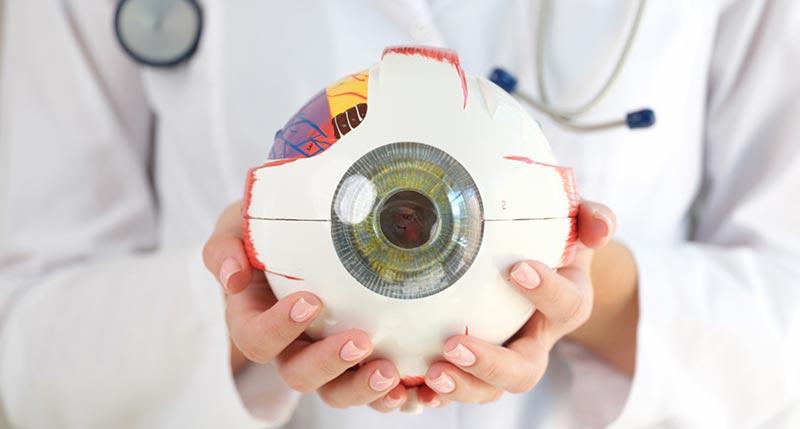All Categories
Featured
Prolonged exposure to ultraviolet (UV) rays can lead to various eye problems, some of which may result in long-term damage or vision loss. Whether you're outdoors on a sunny beach or taking a stroll on a cloudy day, understanding how UV rays impact your eyes and learning exactly how to protect them is critical for preserving healthy vision.
What Are UV Rays and How Do They Influence the Eyes? UV rays are a type of invisible radiation produced by the sun. There are three kinds of UV rays:
UVA Rays: These permeate deeply into the skin and eyes, contributing to long-term damages. UVB Rays: These are much more intense and can cause surface-level injury, such as sunburn or corneal damages. UVC Rays: These are the most harmful however are taken in by the Planet's ambience and seldom posture a direct danger. Both UVA and UVB rays can damage numerous components of the eye, consisting of the cornea, lens, and retina.
Short-Term Impacts of UV Direct Exposure. Also a brief period of intense UV direct exposure can damage your eyes. A common problem arising from this is photokeratitis, typically described as "sunburn of the eye." Signs and symptoms consist of:
Unpleasant or red eyes. Sensitivity to light. Extreme tearing. Short-term blurred vision. Photokeratitis is usually short-term yet works as a tip of the immediate risks of UV radiation.
Long-Term Impacts of UV Direct Exposure. Cumulative UV direct exposure in time can cause a number of extreme eye conditions, including:

Cataracts: UV rays speed up the growth of cataracts, a condition where the lens of the eye ends up being cloudy, leading to vision disability. Cataracts are a leading reason of loss of sight worldwide.
Macular Deterioration: The macula, a component of the retina responsible for main vision, can be damaged by prolonged UV exposure, boosting the risk of age-related macular deterioration (AMD)
Pterygium: Typically called "surfer's eye," this condition includes a growth of tissue on the white part of the eye, which can cross the cornea and hinder vision.
Pinguecula: UV direct exposure can create yellowish spots to base on the conjunctiva, resulting in inflammation and pain.
Skin Cancer Around the Eyes: The delicate skin surrounding the eyes is extremely prone to UV radiation, enhancing the danger of basic and squamous cell cancer.
Securing Your Eyes from UV Damage. The good information is that safeguarding your eyes from UV radiation is simple and effective. Here are some vital ideas:
Wear UV-Blocking Sunglasses. Select sunglasses that block 100% of UVA and UVB rays. Seek tags showing "UV 400" security. Wrap-around designs provide added insurance coverage, protecting against UV rays from going into from the sides.
Use a Wide-Brimmed Hat. A hat with a broad brim can block virtually 50% of UV rays, providing added protection for your eyes and the fragile skin around them.
Avoid Height Sunlight Hours. UV rays are greatest in between 10 a.m. and 4 p.m. Reduce your outside direct exposure during these hours, or guarantee you're adequately shielded if you need to be outdoors.
Shield Your Eyes Year-Round. UV rays are present year-round, also on gloomy or snowy days. Snow, sand, and water can show UV rays, increasing their impacts. Make sunglasses a part of your everyday routine, no matter the period.
Take Into Consideration UV-Blocking Get In Touch With Lenses. Lots of call lenses now offer UV security, which can be an additional guard when coupled with sunglasses.
Urge Eye Defense for Children. Children's eyes are much more at risk to UV damage due to the fact that their lenses are more clear, enabling even more UV light to reach the retina. Guarantee they wear sunglasses and hats when playing outdoors.
Set Up Regular Eye Tests. Routine brows through to an eye care specialist are vital for monitoring your eye health and wellness. An eye doctor can discover very early signs of UV-related damage and recommend options, such as prescription sunglasses or UV-blocking glasses customized to your requirements.
Final thought. UV rays might be unseen, however their influence on your eye wellness is extremely actual. From temporary pain to long-lasting problems like cataracts and macular deterioration, the risks of UV direct exposure are as well considerable to ignore. By putting on UV-blocking sunglasses, restricting your exposure throughout height hours, and scheduling regular eye examinations, you can safeguard your vision and delight in the outdoors safely. Bear in mind, your eyes are just one of your most useful assets-- take the needed actions to shield them from dangerous UV rays today.
Latest Posts
Learn How to Save Big on Car Maintenance with Montclare Auto Repair’s Exclusive Deals
Discover Why Chicago Drivers Select Montclare Auto Repair for Trusted Service and Big Savings
Unlock WyHy Federal Credit Union – Top Benefits for Your Financial Success
More
Latest Posts
Learn How to Save Big on Car Maintenance with Montclare Auto Repair’s Exclusive Deals
Discover Why Chicago Drivers Select Montclare Auto Repair for Trusted Service and Big Savings
Unlock WyHy Federal Credit Union – Top Benefits for Your Financial Success